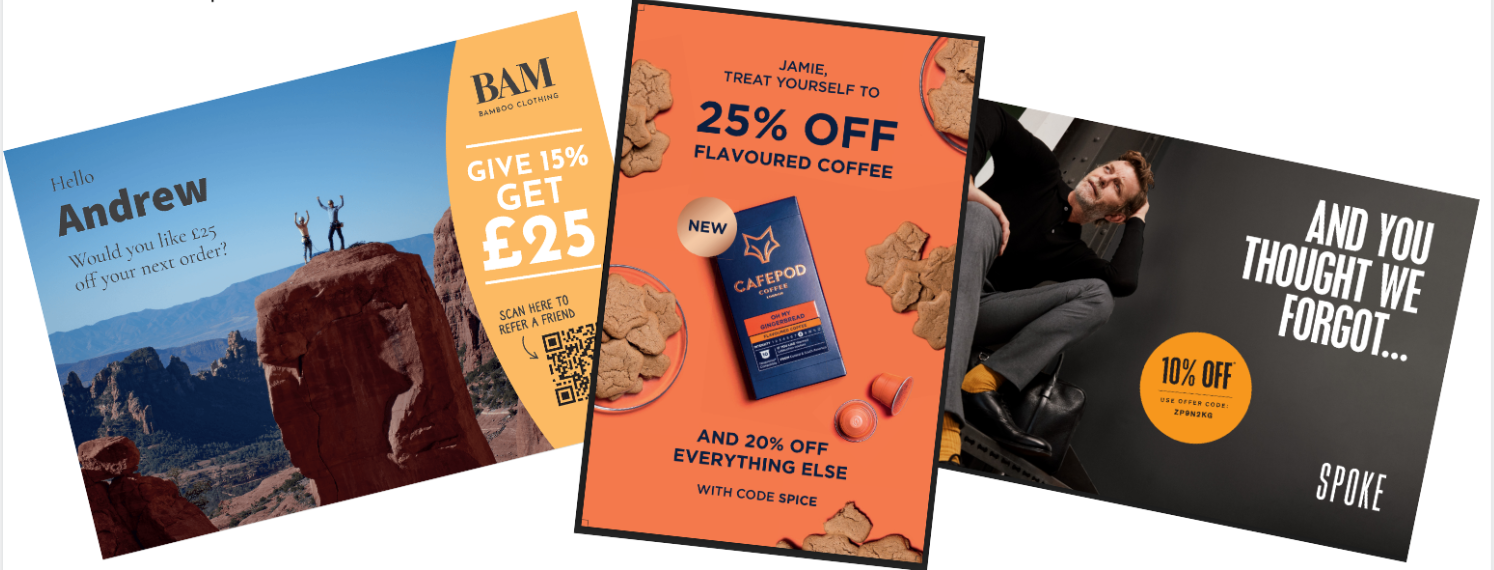First up, what does ‘Effective Content’ actually mean?
Your various Customer segments will ultimately contribute to your overall Business Goals and you’ll have different Goals for different Customer segments. Creating the right Message with a well-considered Call to Action (CTA) for the right Customer segment, and delivering that message at the right time will generate the best Return on Investment (ROI). That’s effective content. Here are a few things to run through first:
Checklist:
- Determine your Business Goals - since you’re here, you’ve probably done that already.
- Define your Customer segments and how they each contribute to your Business Goals.
- Work out the message and the ideal time to deliver that message, to maximise the count of Actions, and ultimately your ROAS (Return on Advertising Spend).
Tip: Let your Customer data decide the optimum timing, not your Goal.
- Decide on the desired Call to Action for each segment.
Tip: Consider ROI tracking options when setting your CTA
- Now you’re ready to create effective content.
Before we move on to content, let’s articulate a real-world scenario here:
Scenario: New Customer
Every day, you acquire new Customers, probably with an eye-wateringly expensive Customer Acquisition Cost (CAC) and your Goal is to make [x] profit or contribution in the first 12 months from each New Customer.
Define:
- Business Goal: Get a repeat order within [x] [period of time]
- Segment: First-time Customers, split by product category
- Message: Convey appreciation and Customer understanding.
- Timing: When is your New Customer most likely to repeat order (since that’s the Goal for this segment). Learn more about timing
- Call to Action: “Don’t run out. Re-order today”.
- Tracking: For simple web transactions, use QR codes (QR acronym: Quick Response - because they are, well, Quick. And trackable). Learn more about tracking
With the Goals defined, you can create effective content with clarity and purpose. You’ll probably have different ideas about how best to achieve the Goal. ZAPOLOGY: ‘Test’. Try different creative / message / CTA for the same segment - you’ll soon know which version delivered best on the Goal.
Let’s define ‘Content’:
- The Creative an image or collection of images relating to the Goal.
- The Message ONE simple clear message, or offer.
- The Call to Action Precisely what want your Recipient to do next
- Dynamic content “where the magic happens”
Keep in mind two key factors: Relevance & Timing
This sounds obvious but the message should be relevant to the Recipient and the timing of the delivery of that message (the Zap) will ensure success.
Drilling into the Content elements:
The Creative
If your Zap is a postcard, you already know a Zap postcard is oversized. It has doormat presence and ‘kitchen table’ staying power. Still, you want to draw attention to your Zap as much as possible. Go bold, or go home. Below are some examples of the better-performing Zaps.
These creatives are well thought out, and well designed.
The commonality? On Brand. Bold. Simple. Single message.
In each case, whilst the creative is excellent, the real winning factor, as always, was timing and relevance.
Check out the results of these three campaigns over in Impact Stories
The Message
ZAPOLOGY: One simple message.
Don't try to be all things to all recipients - there’s no need. You are in the right place to personalise each message to each recipient. You can create as many campaigns as you like - they don't cost you any more so why not? Remember, relevance is a critical factor to success, so let's make each message relevant, and personal, and simple.
So, what’s the message?
The message is generally the pre-cursor to the Call to Action.
Stating the obvious, it depends on your Goal so we can’t be prescriptive as to what the message should be but here are some tips:
- Keep it short and succinct as possible.
- Assume your recipient only cares about the benefit to them.
- Where appropriate, inject some urgency.
- Set an offer expiration date.
- Test different offer messages to the same Customer segment. Money off vs % off vs BOGOFF - you’ll find the sweet-spot soon enough.
- If you are using Offer Codes for use online, please check out this guide.
- It there are T’s and C’s, provide a URL - avoid wasting space for anything other than the headlines.
You can always check out real-world examples in Impact Stories for inspiration.
Call to Action
Straight after your simple message, you want to drive an action. Again, sounds obvious, but its worth putting some real thought into this:
Using the New Customer scenario above, the CTA is “Don’t run out. Re-order today”.
The text is inferring a benefit, and engendering FOMO and some urgency.
Zapology: Your CTA should deliver on as many of these points as possible:
- Benefit
- Urgency
- Limited supply
- Value
- FOMO
And the execution should be crystal clear: “Scan”, “Visit”, “Call”, “Share”, “Post”, "Buy".
Remembering you are fusing your digital and physical worlds, we actively encourage the use of QR codes. Learn how to use QR Codes here. In short, you have options of either fixed or dynamic QR codes - both can be trackable. Dynamic QR Codes have the added advantage of enabling a unique landing page for every single recipient.
Dynamic Content
The dynamic nature of ZAP~POST enables high levels of personalisation for each and every Zap. Whether you are sending 1 or 10,000 Zaps in a single day, each Zap should be personal to the recipient however, and whilst it may be obvious, personalisation of your Zaps relies on good quality data.
Data flows into ZAP~POST via integrations, API calls and CSV upload. Every attribute may be used to personalise content by applying variables in the app.
Jump to it In this article:
Recommended Reads